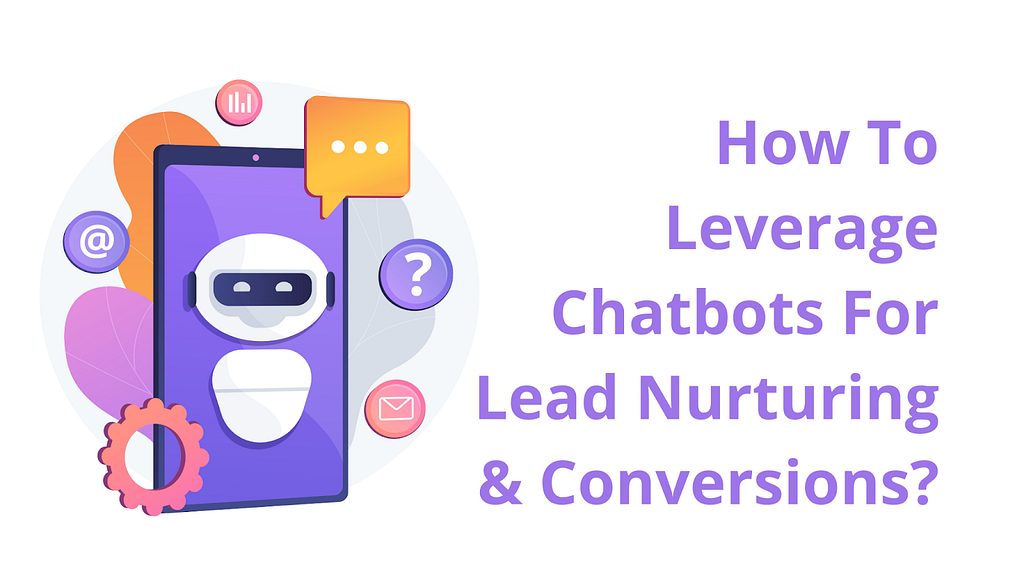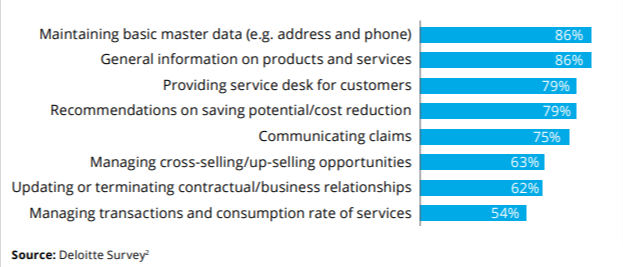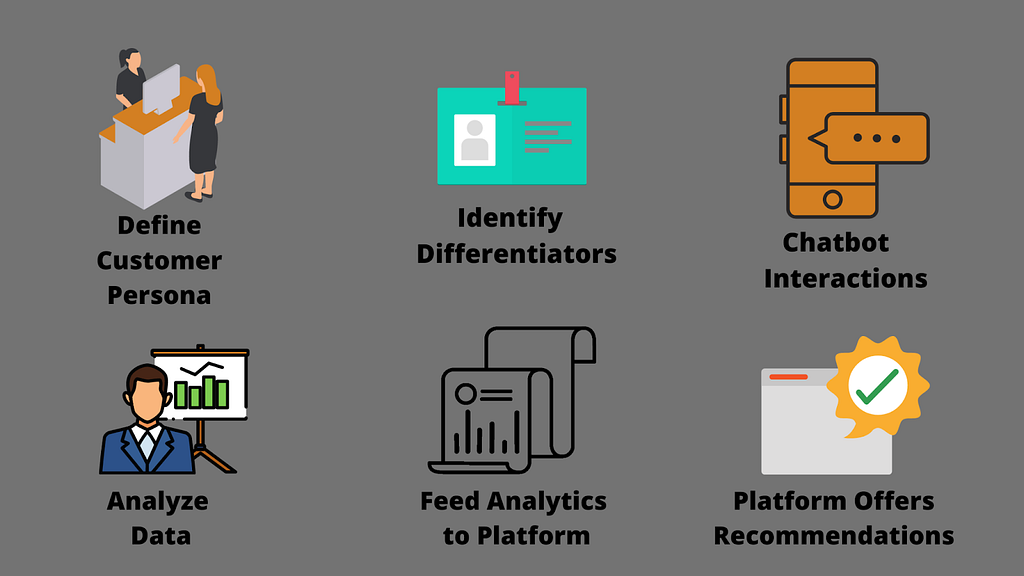
What is the most challenging aspect of marketing? Its conversions, correct? Identifying your potential customer, predicting their interest, engaging, and nurturing them for an ultimate buyout is not that easy.
This is where Artificial Intelligence can help you analyze the customer pool, identify and segregate lead. Further, you can even nurture them using AI-based algorithms, which helps in delivering high value.
Take an example of the famous inbound marketing giant Hubspot. It has leveraged chatbots to improve qualified lead generation by 182% and increase in-chat engagement by 75%. So, Ai-based chatbots are the new age wizards for your marketing needs. First, however, you need to know how and when to leverage a chatbot for lead nurturing and conversions.
Here, we will discuss both starting with how!

Top Ways to Leverage Chatbots for Lead Nurturing
Chatbots can power your customer support, enhance customer journeys, and even help you nurture leads. It uses technologies like Artificial Intelligence, Natural Language Programming, and Speech Recognition. As a result, chatbots have become a beacon of AI-based marketing, where data aggregation, analysis, interactions, and smart product recommendations are seamless.
AI-based marketing can help you in conversational excellence. When it comes to conversation-based marketing, it has three pillars,
- Listen to your customer
- Deliver personalize experience
- Engage, engage, engage
Let’s discover how chatbots merge conversational excellence with intelligent AI algorithms to nurture leads!
Trending Bot Articles:
2. Automated vs Live Chats: What will the Future of Customer Service Look Like?
4. Chatbot Vs. Intelligent Virtual Assistant — What’s the difference & Why Care?
#1. Customer Segmentation
Nurturing your leads needs segmentation of customers. It will help you to personalize the content as per the segment of the customer. However, segmentation needs data aggregation and analysis to create buyer patterns.

Chatbots can do both easily by extracting data through conversations with users and analyzing them through the backend algorithms. The process starts with data aggregation from users, which is a crucial aspect of chatbot conversations. A Delloite survey suggests that most of the chatbots used to carry out the function of maintaining master data(especially addresses and phone numbers)
Moreover, these chatbots can also enable customer segmentation based on demography, psychography, geography, and behavioral changes. Interactions of users with your business largely depend on the behavioral data. So, it is essential to design the entire segmentation process for optimized data accumulation.
Here is a process that you can follow,
- Step-1- Define target personas
- Step-2- Identify the differentiator
- Step-3- Chatbot interactions that aggregate data per differentiator
- Step-4- Analyze the customer data collected from the chatbot interactions
- Step-5- Input data patterns into the marketing platform
- Step-6- The platform uses differentiators and patterns to offer recommendations

Define Customer Persona — Blog Banner (canva.com)
Customer segmentation is the first process towards the identification of leads which you can nurture through a chatbot.
#2. Lead Identification
Every interaction from a customer with your business does not qualify for a lead, and that is where a chatbot can come in handy. However, identifying a lead from several interactions is not that easy, and chatbots can leverage AI-based technologies to identify specific patterns to segregate leads.
For example, if you are looking to find leads for your roofing business, you need to segregate between leads which can be a person(B2C) or a company(B2B) with an interest in your product or services. These leads can be marketing qualified or sales qualified, but identifying them is key to figuring out the conversations with each lead to nurture them.
Now that you have qualified leads and segmented leads executed, the next step will be to personalize further conversions for specific data aggregations.
#3. Customized Data Aggregations(Forms vs. Bots)
One of the most conventional approaches that most organizations used for data aggregation was forms. To target them with specific promotional campaigns, customers will fill details in the form that marketing teams can leverage for lead identification and segregation.
However, it is not an efficient way of gathering data, plus filling forms is a tedious job for customers. Here, a chatbot can help you aggregate data without the hassle of a form. Apart from the engagement, another essential fact is the amount of data that chatbots can extract for you.
Forms have limitations of fields that chatbots don’t have, and most importantly, these bots can interact with a user than just asking to fill a form. For example, the average conversion rate of the lead generation form on the landing page is 2.35%. A chatbot, on the other hand, offers 10%-100% conversion rates.
So, a chatbot can help you gather data for lead generation and gather crucial information to nurture the lead up to the point of sale. Though your ultimate goal may be to reach the sales part, it never ends there. You will need a reliable customer support system to enhance the customer journey and keep them returning to your products or services.
But, the question that will come to your mind will be; are chatbots enough?
#4. Hybrid Customer Support
Customer support systems are great to help your customers, but they lack efficacy. According to Statista, 27% of American customers are frustrated due to ineffective customer service. The same report suggests that 12% of American customers point out lack of speed as the first factor that frustrates them while interacting with businesses.
Customer support is also one of the most significant customer journey touchpoints you need to ace for lead nurturing. Chatbots can enhance the entire customer support system through a hybrid approach. For example, chatbots can offer initial resolutions, and for expert advice, the customer support ticket can be further handled by a customer support executive.
A hybrid approach can,
- Reduce response time
- Help in the aggregation of customer’s queries efficiently
- Resolve fundamental issues through self-help tutorials offered through chatbots
- Enhance customer support process flow
Chatbots can also enable chat personalizations, the lead qualifications, identifications, segmentations, and support for queries.
#5. Chat Personalizations
Chatbots are considered one of the most effective marketing tools for user engagement. The reason is simple; these AI-based tools offer chat personalizations. Organizations can enable personalized recommendations, specific services, and even suggest solutions to customers through chatbots.
Here, businesses can integrate chatbots into their CRM(Custom Relationship Management) systems to enhance personalizations. According to a report, 63% of customers stop buying from a brand that did not use personalization strategies. So, ignoring the personalization aspect of marketing is not an option.
Some of the best CRM tools that can help in chatbot integration are,
- Salesforce
- Keap
- Zoho CRM
- Oracle NetSuite CRM
- Hubspot CRM
- Zendesk
- Insightly
Conclusion
Chatbots are the future of conversational marketing, and integration with a reliable solution can offer endless possibilities. First, however, you need to configure targeted profiles and define your audience to leverage lead nurturing. Another essential aspect to keep in mind is to develop the logic of the chatbot in sync with your marketing goals for optimal results. So, don’t waste time on conventional forms of marketing when you can program your success!
Don’t forget to give us your 👏 !




How to Leverage Chatbots for Lead Nurturing and Conversions? was originally published in Chatbots Life on Medium, where people are continuing the conversation by highlighting and responding to this story.